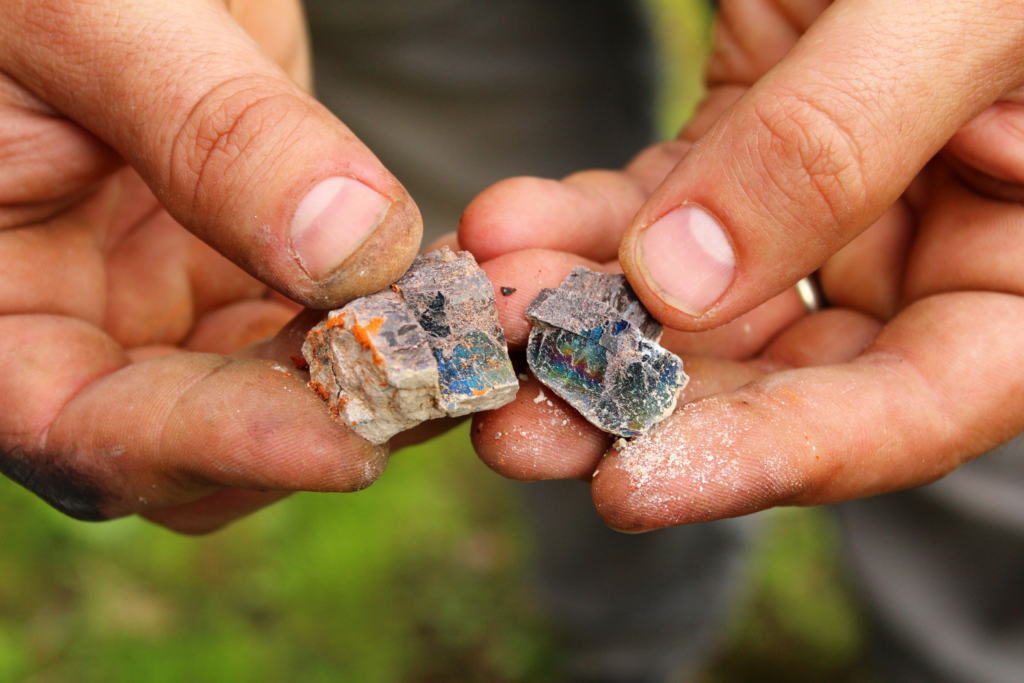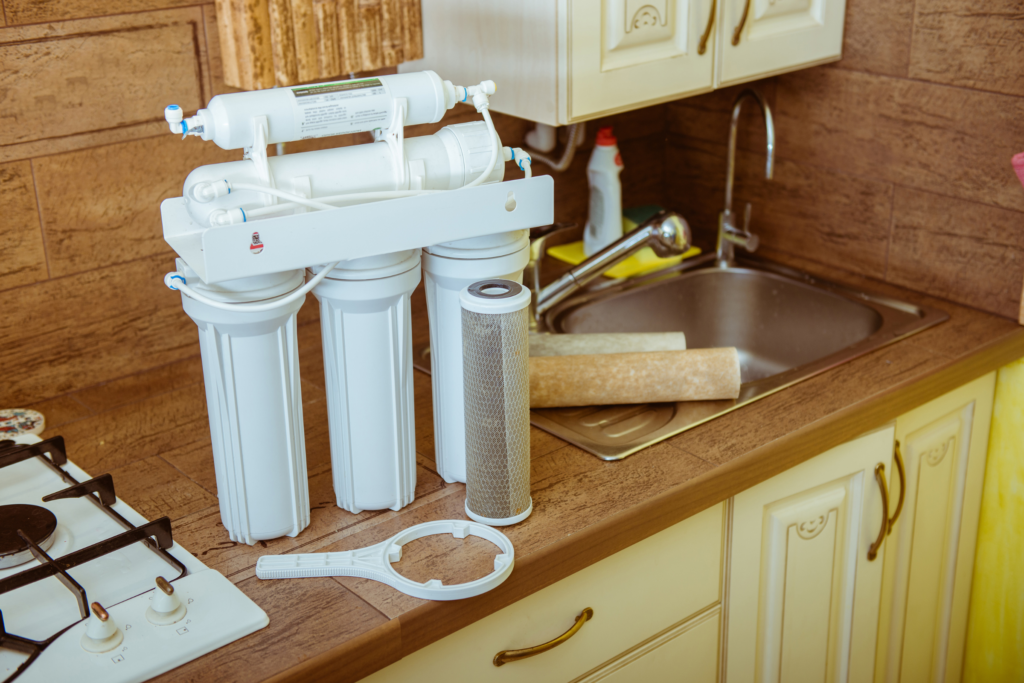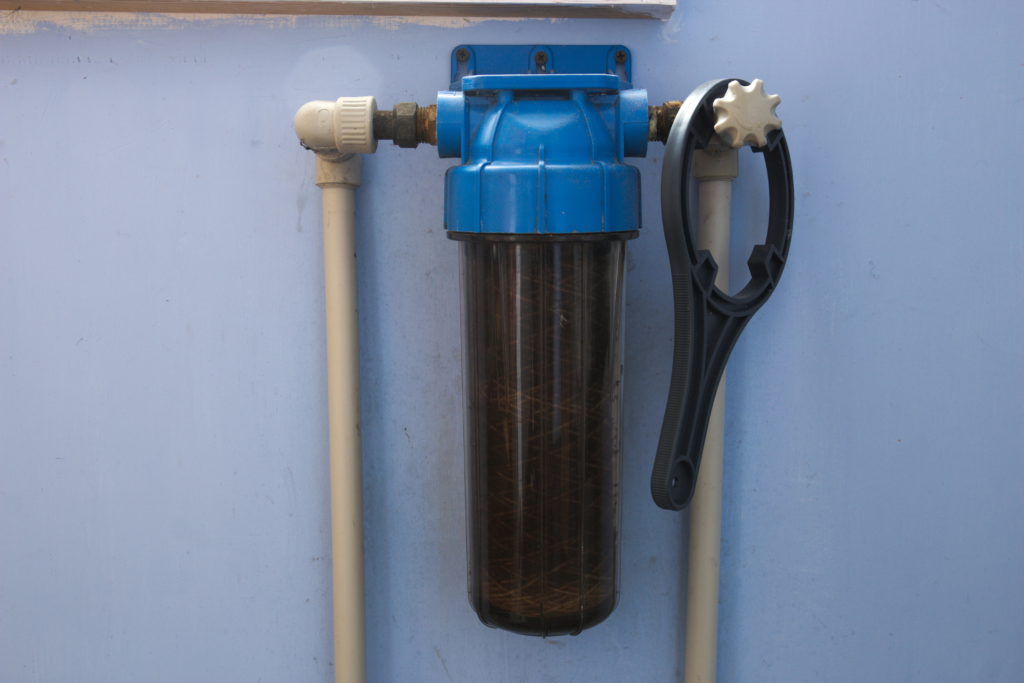Will A Water Filter Remove Calcium? (With Practical Options)
Calcium is a major cause of hardness in water, and its effects can be seen in mineral deposits left on utensils or laundry and scaling in water pipes. Because of these effects, it is essential to remove it from water. Will a water filter remove calcium?
Ion exchange (IX) filters remove calcium and other mineral ions to demineralize water. Reverse Osmosis filters also remove calcium from water, but excess minerals in the water supply can clog or degrade the filters reasonably quickly. The best solution is a water filtration system that uses a water softener and a three-stage filter.
Nano filters can remove up to 90% of the calcium in your water and operate at higher flux and lower pressures (ranging from 75 to 150 psi). They have been used successfully for groundwater softening and are perfect for removing color and disinfecting water. Their main drawback is their high cost for large-scale applications like municipal water treatment.
Will a water filter remove calcium?
Calcium ions are tiny, and it’s actually quite difficult to remove them from your water supply with a water filter. You might be better off using a water softener. At the end of the day, will a water filter remove calcium from your water?
A water filter will have a tough time removing calcium from water. Calcium ions are very small and are not caught by water filters. Instead, water softeners, like salt-free and magnetic softeners, reduce the amount of calcium in your water supply and lessen limescale buildup on your appliances and pipes.
Calcium is safe to drink and generally doesn’t need to be removed from water. However, excess calcium can create limescale buildup and have dietary implications. In either of these cases, it could be useful to reduce the amount of calcium in your water.
Magnetic water softeners are some of the best tools to reduce limescale buildup in your home. Salt-free softeners work well to remove calcium and magnesium and replace it with equally-safe potassium chloride.
Should you remove calcium from your water?
It is safe to drink water with calcium in it. However, large amounts of calcium in your water can cause limescale buildup on your appliances. On the other hand, these minerals are beneficial to our physical well-being. Should you remove calcium from your water?
Calcium adds taste to water naturally, as opposed to distilled, deionized, or demineralized waters that are practically tasteless and have to be treated by adding calcium carbonate (limestone), sodium chloride or mixed with small amounts of water rich in minerals to improve their taste and reduce their corrosiveness to metal pipes.
Low mineral levels in drinking water may be a risk factor for hypertension and coronary heart disease, gastric and duodenal ulcers, chronic gastritis, cholecystitis and nephritis, goiter, pregnancy complications, and several complications in newborns and infants, including jaundice, anemia, fractures, and growth disorders, as well as edema and anemia in pregnant women.
Although drinking water is not a significant source of calcium, many people’s diets may not provide a good source of minerals, so keeping them in your water might help. Elements in water exist as free ions, which are more readily absorbed from water than those in food, which are bound to other substances.
Calcium is a major component of bones and teeth; it decreases neuromuscular excitability, enhances the proper function of the myocardial system, including heart and muscle contraction, and improves intracellular information transmission and blood coagulability.
In other words, if you don’t have calcium in your diet, you may want it in your water.
How does calcium get into water?
Calcium gets into the water when calcium salts are present in the soil and rocks, which are dissolved into surface water. Increasing levels of dissolved calcium eventually make water hard.

Usually, calcium concentrations above 60 mg/L will cause hardness. These levels vary depending on the water source. Generally, bottled waters in the US and Canada have the same calcium concentrations as tap water, with only a few areas having differing amounts.
Calcium in tap water contributes to about 13% of the recommended daily calcium intake, while mineral waters account for 54%.
Common problems associated with excess calcium in water
Even though calcium is good for your health, too much can cause problems. A study that looked at populations that used water with hardness levels greater than 5mmol/L found that the risk of gallstones, kidney stones, urinary stones, arthrosis, and arthropathies increased sharply.
If the calcium levels in your water are 5mmo/L and above, it’s a good idea to use an Ion Exchange water filter to demineralize the water. A whole-house water filter to remove calcium is a good option for any home with a substantial amount of limescale buildup.
Hard water is a particular problem for bathing. Large amounts of calcium, soaps, and detergents will be less viable. They also do not lather because the chemical reactions are not as vibrant.
Excess calcium can also cause a build-up of film on the porcelain of the tub or shower, which can eventually harden into calcified grime over time. Softening your water is a good idea to keep your bathroom clean.
Hard water and excess calcium create stains in certain fixtures. It also causes limescale buildup on faucets and pipes throughout your home. Too much calcium and other minerals can decay pipes over time.

Brown or red stains in the toilet bowl or the sink are a sign that your intake might not be exceptionally pure, which means it is highly like to have unfiltered calcium, magnesium, iron, and even manganese in it.
Excess calcium is also a problem for clean laundry. Calcium prevents soap from washing away the dirt and grime that naturally builds up on cotton, polyester, and other fabrics while they are being worn.
Lots of calcium may mean that you use too much detergent and too hot of water to clean your clothes. This ends up causing your clothes to wear out faster. The key, then, is a filtration system that will remove impurities and give you water that is as clean as possible.
Best ways to filter calcium from water
Let’s look at the water filtration system options for removing calcium:
- Reverse osmosis filtration systems
- Salt-free softeners
- Magnetic softeners
- Ion exchange filters
Reverse Osmosis Filtration Systems
Filters generally work through reverse osmosis, a fancy chemistry term that is relatively straightforward. When pressure is applied to a specific solution, the compounds are forced through a membrane into an area with a lower concentration.
This is the standard method for removing salt from water and is highly effective. Reverse osmosis systems are, in effect, efficient mechanisms for getting rid of impurities, especially in tap water. They are the kings of filtration systems and are reliable when manufactured according to code and set up correctly.

Salt-Free Softeners
Other types of filtering systems might also work for certain homeowners.
A salt-free softener removes the calcium or magnesium from the water and replaces it with potassium chloride to prevent limescale on appliances and intake pipes, reducing strain and decay.
Removing salt from your water will protect against clogged pipes and keep your plumbing network in great shape longer.

Magnetic Softeners
Perhaps one of the most innovative mechanisms is a magnetic softener, which can be affixed to the intake pipe without too much trouble.
Magnetic softeners transform the minerals’ chemical compositions, including calcium and magnesium. The magnetic field does not reduce the amount of calcium in your water supply but reduces scaling on your pipes and appliances.
Essentially, a magnet softener fastens to your intake pipe and alters the chemical composition of the water running through it to prevent limescale buildup.
Ion Exchange Filters
These classic filters fit on your kitchen faucet or into a traditional filter, like a Brita. They primarily improve your tap water’s taste by removing minerals as they come through your faucet.
Ion exchange filters use chemistry to remove minerals from the water supply. Water molecules detach their weak bonds and reattach to stronger ones. During ion exchange in water filtration, the solids (minerals) are separated from the liquids (water).
Ion exchange mechanisms are relatively inexpensive, easy to use, and will hold up for a long time.
As long as the corresponding pitcher is purchased, you can keep large quantities of beautifully tasting liquid in your refrigerator for drinking and recipes in the future.
Can you use a carbon water filter to remove calcium?
Carbon water filters improve the taste by removing chlorine and organic chemicals but will not remove calcium to a significant degree. Activated Carbon Filters (ACF) may include mixed media that remove heavy metals and absorb organic contaminants that bring bad taste and smell.
Some designs remove chlorination byproducts, while others remove cleaning solvents and pesticides. Others may efficiently remove metals such as lead and copper but do not remove nitrates, bacteria, or dissolved minerals.
Activated carbon filters have tiny pores that increase their surface area for adsorption. Water is then passed through the filter, which traps the contaminants. These filters vary in micron rating, from 5 to 0.2 microns, and can be selected based on the contaminants that need removal.
However, they can block over time, so they need to be replaced regularly or as prescribed by the manufacturer.
What kind of filter removes calcium?
An Ion exchange filter is used to reduce scale minerals from the water and is a highly effective treatment for moderate to very hard water. It removes calcium and other ions that cause water hardness and scaling.
IX filters have a fixed-bed process in which a synthetic resin is placed. Water is passed through the resin bed, which exchanges contaminant ions present in the water with ions on the surface of the resin, thus removing them. The resin must be regenerated frequently to remove the contaminant from the resin surface and replace lost exchange ions.
The filter needs to be replaced as it expires when the resin becomes saturated with the blocked calcium.
Do water filters remove minerals?
Some filters will remove mineral content, while others will not. If the filter removes one contaminant, it may not remove others. Filter brands include many different types of filters in their line, including pitcher filters, refrigerator filters, faucet-mounted filters, faucet-integrated (built-in) filters, on-counter filters, under-sink filters, and whole-house water treatment units.
For example, reverse osmosis (RO) filters use membranes and additional filters to remove dissolved solids and other contaminants from water to provide purified water. They require less frequent membrane change and use up to 4+ gallons of water per gallon of filtered water.
Summary of if a water filter will remove calcium
In summary, not all filters are well-suited for removing calcium from the water. Your best bet is an Ion Exchange filter. However, you may want to test your water to know the calcium content before filtering it. Calcium is beneficial and should only be removed if it is too much.
The ion exchange filter will remove calcium and other minerals, which is why you should only use it when necessary. You don’t have to worry if your calcium levels are less than 5mmol/L.
Let Us Know How We’re Doing!
Did this expertly prepared resource answer your question?
Do you have another question about home maintenance, home improvement projects, home appliance repair, or something else?
Get more information, send in questions and keep the discussion going by contacting the I’ll Just Fix It Myself company customer service team at at 1-800-928-1490 or Email us at [email protected]
